Background:
It’s been three years since I performed a flow test of the APR Carbon Fiber closed intake. Those results along with prior testing of the stock GTI airbox showed that it was possible to modify the stock GTI airbox to get similar flow performance as the APR intake.
Equal flow performance from the stock airbox could be obtained by removing the grate in the bottom of the airbox and replacing the stock air filter with an aFe aftermarket filter.
About eight months after those results were published potentially conflicting measurements were made that lead to comments that the flow test was misleading and did not match dyno results.
Interested to understand what could have led to the different conclusion I questioned AP Tuning/Tom Dickinson about how the parts had been measured on the dyno. A key difference was discovered, the dyno test of the modified stock airbox had included the stock Turbo Inlet Elbow.
The stock GTI inlet elbow is a significant source of pressure drop across the intake. With the stock inlet elbow installed a “modified” stock intake will flow roughly 340 CFM @ 28″ of H2O. Removal of the inlet elbow results in the airbox flowing 527 CFM, a substantial increase in airflow at the same test depression.
AP Tuning had removed the stock airbox from the car and noted an increase in power and concluded it was the airbox, not the stock inlet elbow, that was the primary factor affecting the overall intake flow. No dyno runs were made with the modified stock airbox attached to an aftermarket turbo inlet elbow.
I was unsuccessful convincing AP Tuning why the airbox was not the primary contributing factor to the dyno readings so I gave up trying and moved on.
Note: Occasionally I have come across discussions about intakes where someone will state that it doesn’t matter how part X flows since part Y is the most restrictive in the intake. This is incorrect, pressure losses along the intake accumulate. Every part contributes to the total pressure drop. Eventually with a high enough flow rate the flow through the intake would become choked somewhere, but I doubt supersonic airflow is close to being reached at typical power levels.
Since the initial discussion took place the subject of the “seemingly” disparate results has popped up occasionally and I have tried to explain why there was a difference between the flow bench tests and the AP Tuning dyno. Most recently this came up in my post about BOVs and DVs, Tom commented about finding differing “real world results” from the flow bench test.
With the topic of the APR intake vs modified stock renewed and coinciding with the conclusion of the BOV & DV testing I assessed that my GTI was in a good state to perform an intake comparison test.
Test Procedure:
This test is to compare the APR Carbon Fiber closed intake to a modified stock GTI airbox on an IS38 equipped GTI using an EQT custom ECU tune during street acceleration. These results will be compared with the flow test results and also compared with the results reported by AP Tuning.
The GTI airbox is modified by removing the grate from the lower half of the airbox and replacing the stock air filter with an aFe Performance dry filter. The stock air duct is opened on the driver’s side and the rear opening on the passenger side to the engine compartment is covered.
Both air intakes will be attached to the stock accordion hose and a generic aftermarket turbo inlet elbow.
The GTI will be operated on the street and accelerated in third gear at full throttle from approximately 2000 RPM until just past 6300 RPM. The time for the GTI to accelerate from 47 to 84 MPH will be measured using a Dragy datalogger. Only runs that the Dragy scores as “Valid” will be included for post-testing analysis.
The GTI will first be equipped with the APR intake. After recording data the modified stock airbox will then be installed and the car left to sit overnight to cool off. The GTI will be driven to the same location for data recording with the modified stock airbox and atmospheric temperature will be monitored to check for consistent test conditions between the two sessions.
Test Results:
Conditions during the data collection are shown on the next two charts:
A total of nine (9) valid observations were made with the APR intake and ten (10) valid observations were recorded with the modified stock GTI airbox. The raw data is shown in the table:
The data is consolidated in the box plot below:
There is a large amount of overlap between the two data sets indicating that the acceleration times are very similar for each setup.
Running a t-Test on the data provides summary statistics as well as in indication if there is or is not a statistically significant difference in the data sets.
Note: Equal variances were assumed based upon having similarity of test conditions, data logging device, and the maximum variance being only 9/1000 th’s of a second.
The t-Test shows that the modified stock airbox has a fractionally faster time, 0.028 seconds, reflecting what is shown in the box plot. The difference in the observations from these data sets is not large enough to reject the hypothesis that there is no difference in acceleration times.
Looking at the wastegate duty cycle of the pulls (solid lines are APR intake, dashed lines are modified stock):
There is a slight difference between the data sets. Generating an average of three data observations for each intake produces the smoothed curves on the next chart:
The next chart shows the correlation between the flow bench measured airflow and the street acceleration times.
Note: Prior to comparing the APR and modified stock airbox I had the Eventuri intake installed so I recorded street acceleration data with it as well.
The difference in acceleration times is quite small, but strongly correlated with the flow bench measured airflow/pressure drop across each intake.
Conclusions:
Street testing of an APR closed air intake and a modified stock GTI air intake showed no significant difference in acceleration times for an IS38 equipped GTI following the procedures described above.
The acceleration time difference recorded in theses samples is not statistically significant.
Wastegate duty cycle while using the APR intake is a couple of percent greater at higher engine speeds, indicating a probable higher pressure drop across the APR intake versus the modified stock airbox, in agreement with flow bench testing.
Results of the street acceleration tests correlate strongly with the flow bench measurements.
These results do not support a claim that the flow bench measurements do not agree with “real world” results.
Notably, each air intake flows approximately 10 CFM more or less than the nearest compared intake and the acceleration time is approximately 0.03 seconds more or less than the nearest compared intake. From the samples in this test a 10 CFM difference in airflow corresponds to an approximate 0.03 second difference in acceleration time from 47 to 84 MPH.
Finally, it is unlikely that a driver would detect a 0.03 second difference in acceleration time whether using the APR intake or the “modified” stock airbox.
Comparison with AP Tuning dyno results:
The dyno based data recorded by AP Tuning was of a stock airbox with the grate removed, aftermarket air filter, stock accordion hose, and importantly a stock turbo inlet elbow. The inclusion of the stock turbo inlet elbow is a significant deviation from the test configuration that I use when testing a “modified” stock intake.
The comparison “aftermarket” intake that AP Tuning tested was configured to include an aftermarket turbo inlet elbow.
Because the dyno generated data did not standardize the turbo inlet elbow (stock or aftermarket) there is no reason to expect the results to match flow bench testing that used an aftermarket turbo inlet elbow with both the modified stock intake and APR intake.

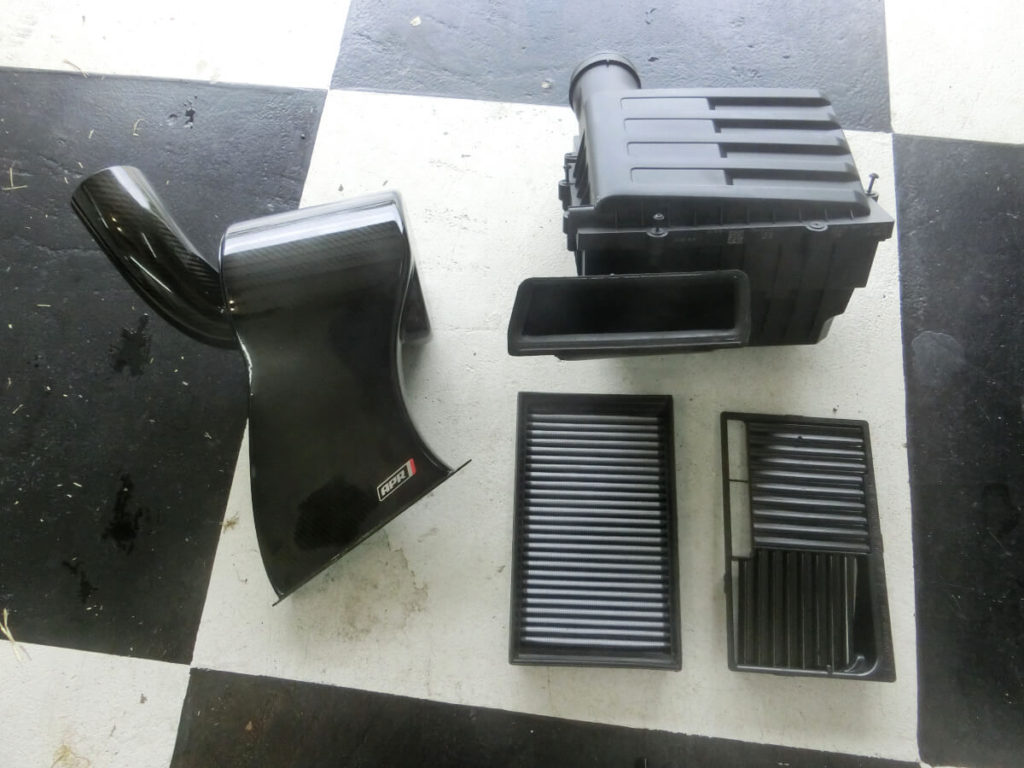
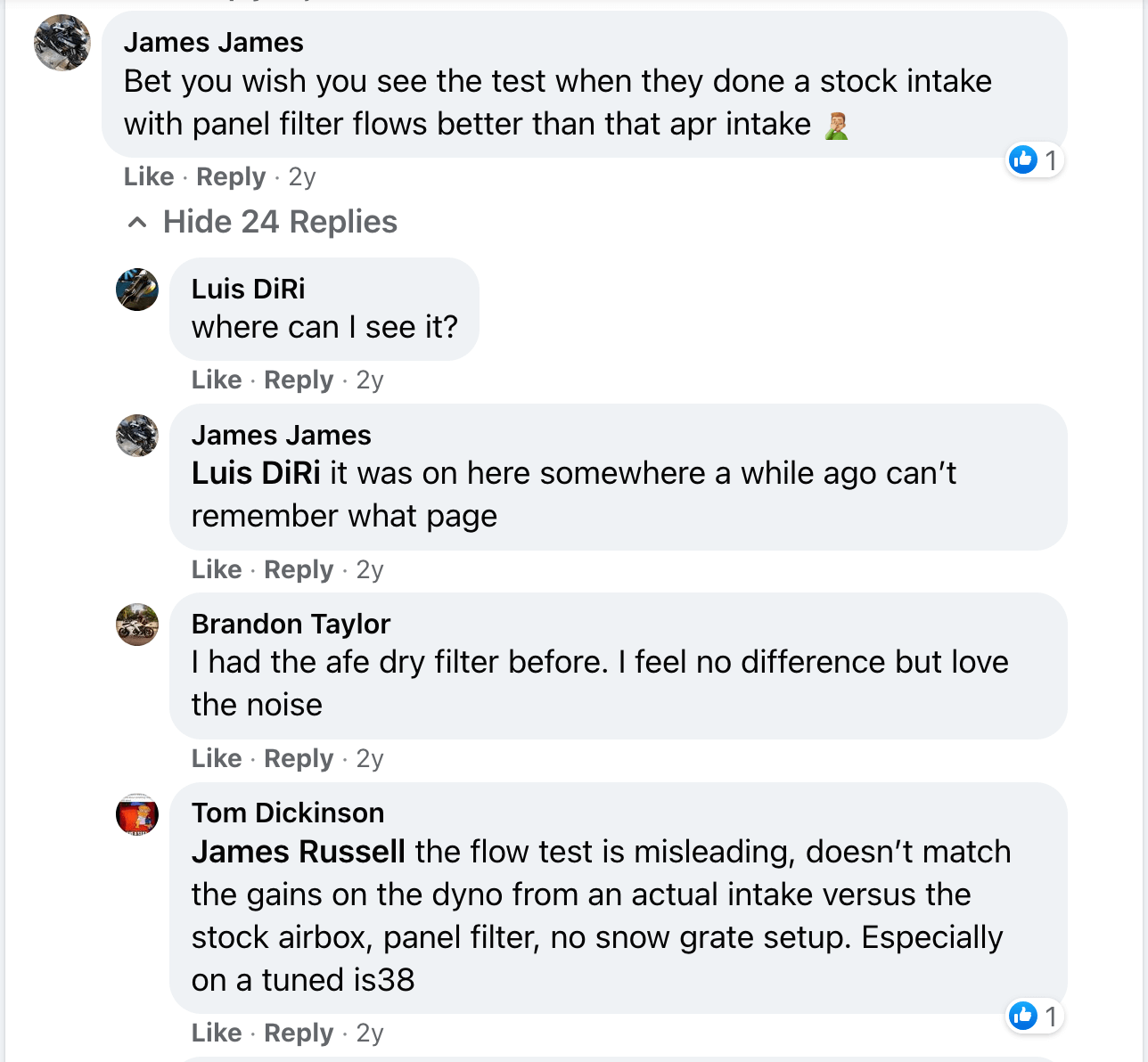





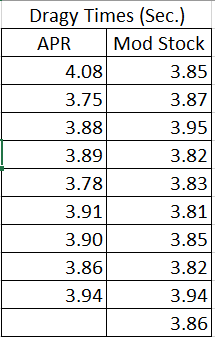

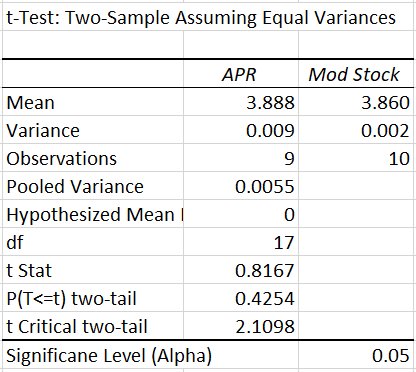


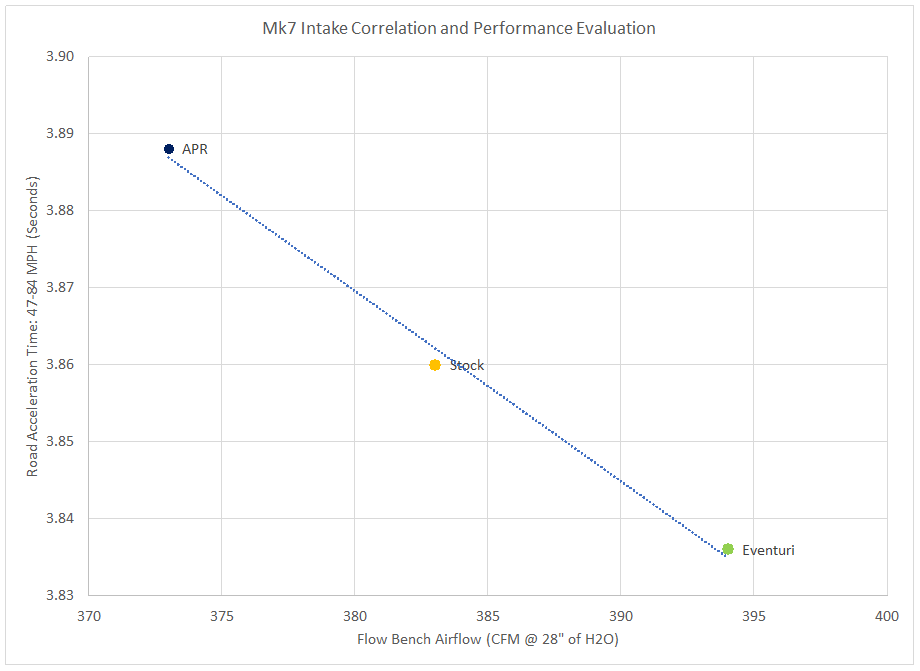
Hi Jeff
Thanks again for your detailed thoughtful work. Is there a practical way to work out how much air the gti actually flows in the real world? By that I mean how many cfm is being inhaled at full throttle? That would then mean that intake setup ‘x’ has more than enough flow to match an is38 etc. Might be interesting?
Thanks Craig! I expect that the airflow readings that can be read from the OBD port are probably about as close to the actual reading as you’d be likely to get from a calculation. I assume VW created the airflow tables based upon measurements made of the airflow. When I have measured the turbo outlet temperature it has matched up quite well to what is calculated in the ECU most of the time. Perhaps if you are operating well outside of the normal range, like using an aftermarket MAP sensor, the tables might start to lose some accuracy, but with factory sensors I’m guessing the ECU reported values are probably good.
Thanks Jeff! Do you have a graph handy of the ecu airflow values off the obd port at full throttle? I’d like to take a look. Apologies if it’s there already,.I may have overlooked it. Regards Craig
This is a chart of boost and airflow. Boost is the reddish line.
Good one again Jeff and one that is often debated on the FB group. I remember the HP Tuners testing with Tom D. and remember several back/forths with him on that thread and never fully understood the real-world dyno results – always seemed like something was off. If I win the lottery, I’m buying you a dyno.
Thanks! I’ve hung onto the APR airbox for years waiting to get around to making this comparison. Excess parts are taking up too much of my garage as it is, but thanks for the thought about a dyno.